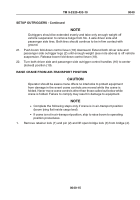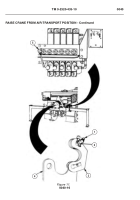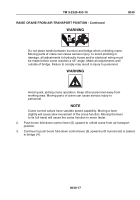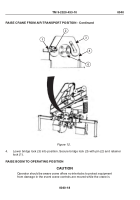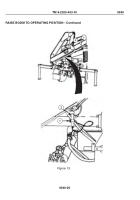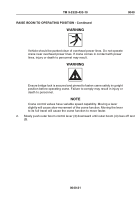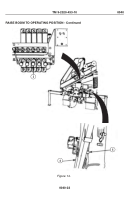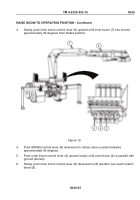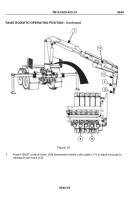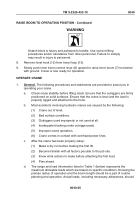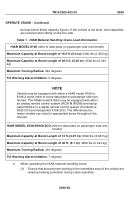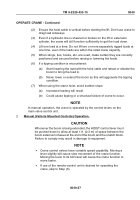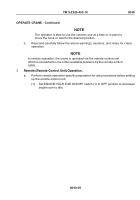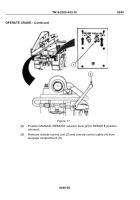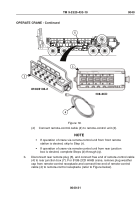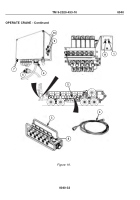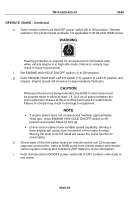TM-9-2320-433-10 - Page 259 of 964
RAISE BOOM TO OPERATING POSITION - Continued
WARNING
Snatch block is heavy and awkward to handle. Use correct lifting
procedures and/or assistance from other personnel. Failure to comply
may result in injury to personnel.
8.
Remove hoist hook (12) from travel loop (13).
9.
Slowly push inner boom control lever (6) upward to raise inner boom (7) horizontal
with ground. Crane is now ready for operation.
OPERATE CRANE
1.
General.
The following procedures and statements are provided to assist you in
operating your crane.
a.
Check crane stability before lifting loads. Ensure that the outriggers are firmly
positioned on solid surfaces. Ensure that the crane is level and the load is
properly rigged and attached to the hook.
b.
Most accidents involving hydraulic cranes are caused by the following:
(1)
Crane out of level.
(2)
Bad surface conditions.
(3)
Outriggers used improperly or not used at all.
(4)
Inadequate blocking under outrigger pads.
(5)
Improper crane operation.
(6)
Crane comes in contact with overhead power lines.
c.
After the crane has been properly setup:
(1)
Make a dry run before making the first lift.
(2)
Become familiar with all factors peculiar to the job site.
(3)
Know what actions to make before attaching the first load.
(4)
Plan ahead.
d.
The range and load information listed in Table 1 (below) represents the
maximum allowable loads which are based on specific conditions. Knowing the
precise radius of operation and the boom length should be a part of routine
planning and operation. Actual loads, including necessary allowances, should
TM 9-2320-433-10
0040
0040-25
Back to Top

